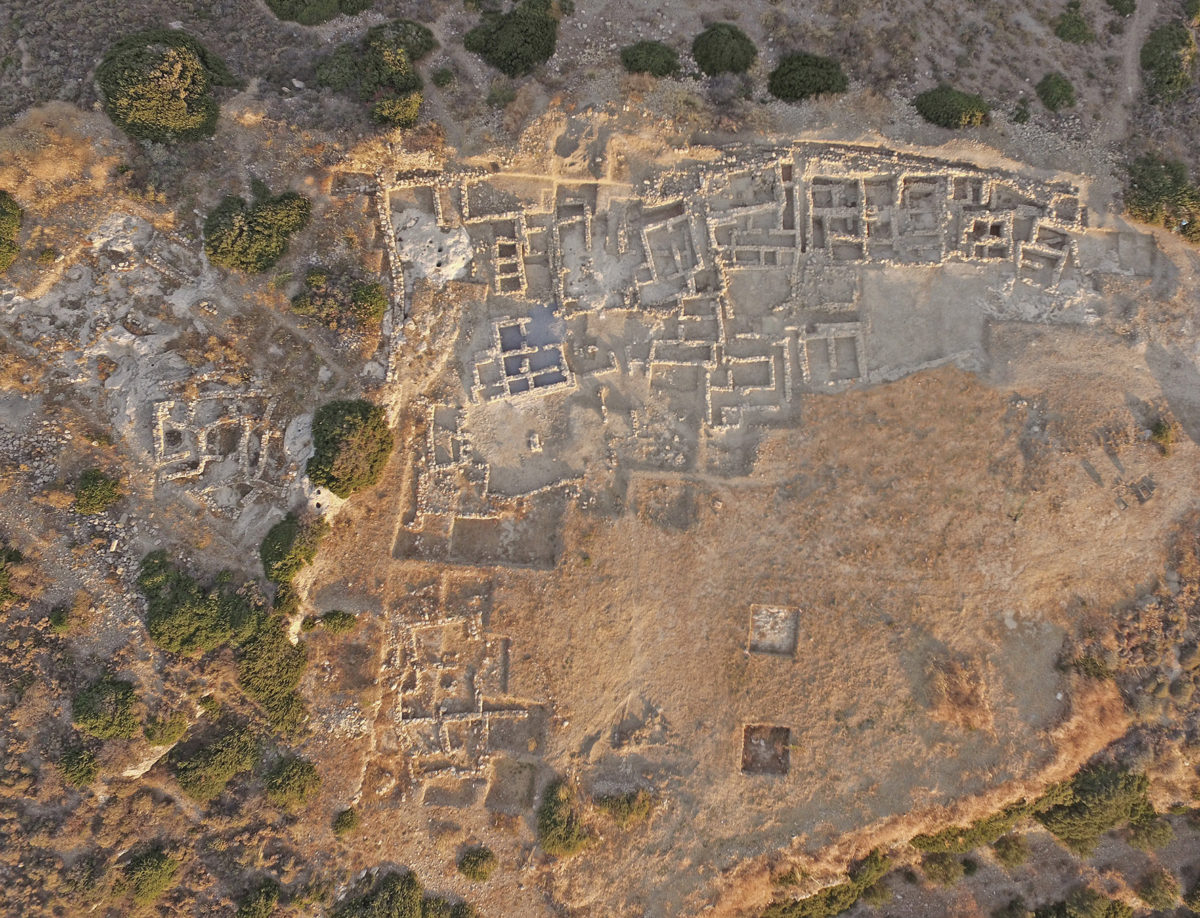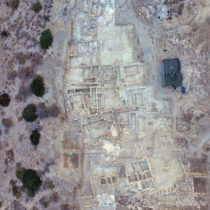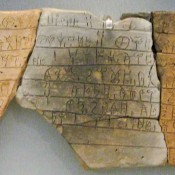The unplundered Minoan cemetery for the elite of that time at Petras in Siteia, continuously used from 2800 to around 1700 BC, i.e. for over one thousand years, provides valuable information on many levels. Even more so since this is the same region where one of the oldest palaces on Crete flourished, and the site of the best preserved of the island’s three hieroglyphic archives (from Knossos, Malia and Petras).
‟The cemetery is associated with the palatial settlement of Petras, but belongs to a particular social group. That is, it does not seem to have served the entire population of the urban settlement, which would have amounted to several thousand. Those who are buried there belonged to higher social class,” said Dr. Metaxia Tsipopoulou, Honorary Director of the Ministry of Culture and Sports to the Athens and Macedonia News Agency. She has headed the excavations conducted at Petra Cemetery in Siteia over the last 16 years, with an interdisciplinary team from Greece and abroad. Moreover, Mrs Tsipopoulou has been personally involved in research at Petras since 1985, where three Minoan settlements and a Minoan palace have come to light.
What conclusions can be drawn from the members of an elite who lived and died in Petras four millennia ago? ‟There are men and women of all ages in the cemetery, from newborn babies to individuals over 45. The older ones are mostly men, because, unfortunately, women died young, having gone through too many childbirths. From anthropological studies, we know that these people were two centimeters taller than other populations in Crete of the same era, meaning that being the elite, they would have had access to better nutrition. They also had fewer diseases, although some of them seem to have suffered from bone pathologies such as bone cancer, thalassemia and arthritis.
‟It is the first time in Minoan archaeology that we have so much information from the people themselves, that is, from their skeletal remains, because the excavation and documentation of the skeletal material has been conducted by a team of specialized osteoarchaeologists. This is extremely significant. When we are also able to conduct other research, such as the analysis of DNA and strontium isotope, then we will learn much more interesting facts about these peoples’ social organization”.
The grave goods of the funerary buildings are extremely rich, often of valuable materials, and are works of art, mainly miniatures. The organization of the cemetery itself, however, is also interesting. ‟It was organized as over ground funerary buildings, constructed side by side, resembling houses. Their floor plan consists of square or rectangular chambers and corridors. All funeral buildings are over 50 sq.m., but we have quite a few that are larger than 100 sq.m. The largest had 13 chambers, each approximately 5-10 sq.m. In the cemetery architecture, one can clearly trace social competition, as no two buildings are identical. It seems that every family or clan was trying to outshine its neighbour”, pointed out the excavator to the AMNA.
Petras cemetery also includes two large areas for rituals, one in the south part connected to a unique funerary building and a second larger one in the north part, which served 5-6 adjacent funerary buildings. ‟At these sites we have found — without exaggeration — tons of pottery, clay figurines, stone pots and many vessels with sculpted decorations, such as small animal statuettes, with depictions of bulls, a dog, as well as heads of what is probably a Cretan wild cat, which were attached to vases. We have also brought to light several phiales (small bowls), some with a seated bull and others with lilies or human figures fitted inside them,” says Ms. Tsipopoulou to the AMNA.
The cemetery was in operation for over a thousand years… And then what happened? ‟With the destruction of the first palace around 1800 BC, the cemetery stops being used, despite the palace itself being rebuilt and the continuing existence of the settlement. This is particularly interesting because it signifies substantial political, administrative and social changes, observed not only at Petras but across the island. We believe that after the great earthquake and the fires that destroyed the early palaces, Knossos prevailed and imposed its own terms, ” says Ms Tsipopoulou to the AMNA. She explains to us that the later Petras cemetery, i.e. the Neopalatial one, has not yet been found. “This is generally a problem in the archaeology of Crete. There are very few Neopalatial cemeteries, i.e. ones from 1700 to 1450 BC, while many have been discovered from earlier and later periods. The use of the Petras cemetery ceases with the catastrophe of the old palace”.
Petras flourished in relation to its port which was a major gateway to the east but fell into decline when Knossos founded the palace of Zakros with a more convenient port for trading with those parts of the world. ‟Situated at the northeast end of Crete, Petras was in its early phases the main point of contact with the east. We therefore have many valuable items being imported mainly from the Middle East, Egypt and Syria. Most of these were semiprecious stones for seals, jewellery and stone vessels, enough ivory for seals and beads, copper, gold and silver which came from the Cyclades. Even a lapis lazuli bead was found at the Petras cemetery, which would have reached the Mediterranean from Afghanistan by some caravan. An Egyptian scarab shaped seal also came to light this year. It is really a very rich cemetery. Of course, along with all these beautiful things, the majority being raw materials, came techniques and ideas which influenced the Early and Middle Minoan cultures- such the making stone vessels which originated in Egypt- as well as many others we cannot trace,” said Dr Tsipopoulou to the AMNA regarding the important findings of the cemetery whose research is expected to be completed in 2021.
Information about the research and publications on Petras in Siteia is to be found on the excavation’s website: https://petras-excavations.gr/el





